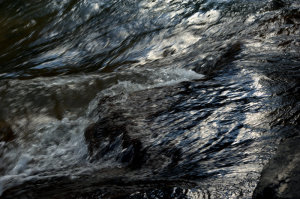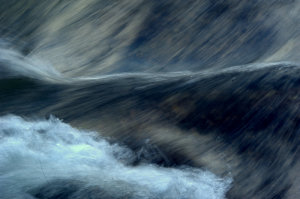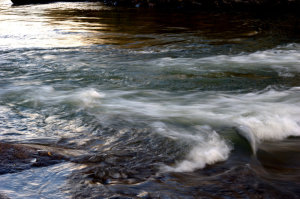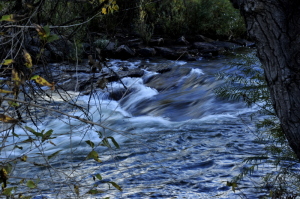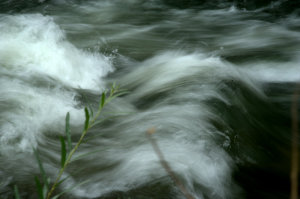The last couple of months have seen a lot of travel and computer failure issues. Hopefully the failing issues are done but the traveling will continue.
One thing I have been asked a lot by people who watch me photograph streams is how to blur the water. It is like taking lightening shots, it is very simple if you use a good technique. To me the most important step is to decide how you want the image to look. If you want a solid white stream of water if you are shooting around falls or rocks than you shoot one way. If you want a small amount of blur just to show a little motion then you shoot another.
This really becomes a study motion and stopping motion. It does not only apply to water but birds, people, cars and other items. The simple solution is that you must make a decision as to how you want items to look in the image. I personally very seldom to a total stop action image. I like a little movement in most of my images. It adds depth to the meaning of the shot in my opinion.
You will find many who will tell you that you need to use a tripod and releases all the time. I do not. I do use them on occasion but find most of the time I do not. I shot many shots in Golden, Colorado of Clear Creek and never used a tripod. I used a rail fence, rocks and trees to help study the camera. Many shots were done handheld. If you are shooting nothing but moving water why would you worry about a little camera shake as you want the image blurred. You can control it with exposure settings including ISO.
If you have other items that need to be sharp then you will need to brace the camera somehow. A tripod or monopod is a very useful piece of equipment. I use a hand release, a cable release if you wish to call it that. I use it even on hand held shots of less than 1/40th of a second. Younger shooters may be able to hand hold a camera without a brace at lower exposures than I can at 63.
Image 2052, the full frame water blur was shot at 1/10 of a second, f/20, ISO 250. It has a lot of blur but with the fast moving water it makes an interesting image. Images 2250 was shot 1/10th, F/25, ISO 320 which allowed the motion to be blurred but allowed for some of the plants on the right to be in focus. Image 8308 the black water type of shot, was shot at 1/60th, f/7.1, and ISO 200. Image 2073 was shot at 1/10th, F/18 and ISO 250.
You can see the difference in the images by changing the f-stops and ISOs. You can manipulate the area of focus in the images for more an artistic style. Now if you want to stop the action in the water, you can shoot in the 1/250 and up shutter speed depending on the speed of the subject. I will be doing an article on photographing birds in flight a little later but as a hit, 1/500 and up especially with ducks as their wings are very fast. Hummingbirds are in a world of their own and you really need to be up in the 1/1000 area.
You can see this article and more images a www.davidgeorgephotography.net
